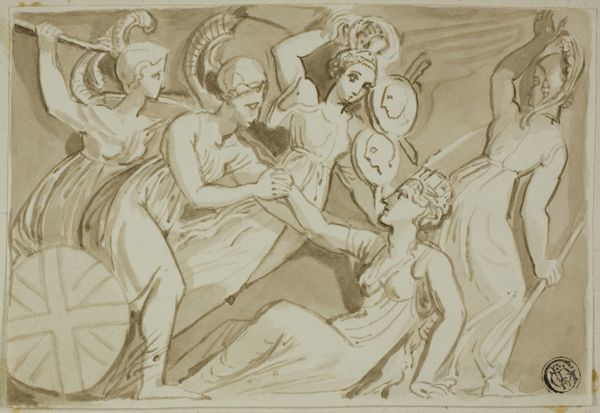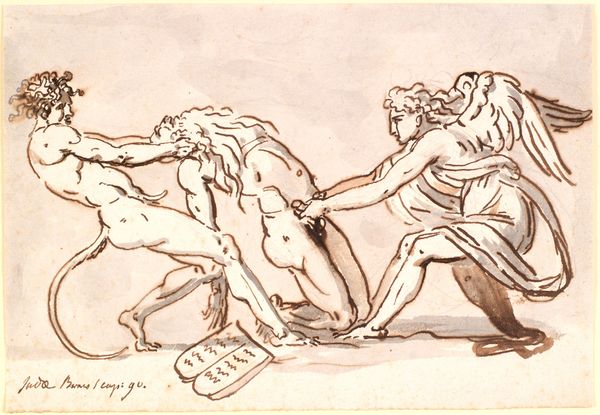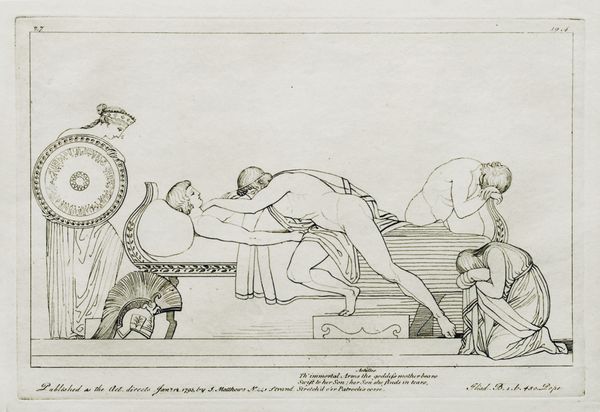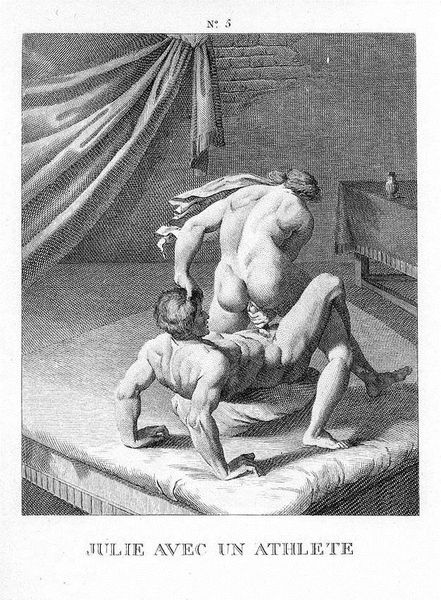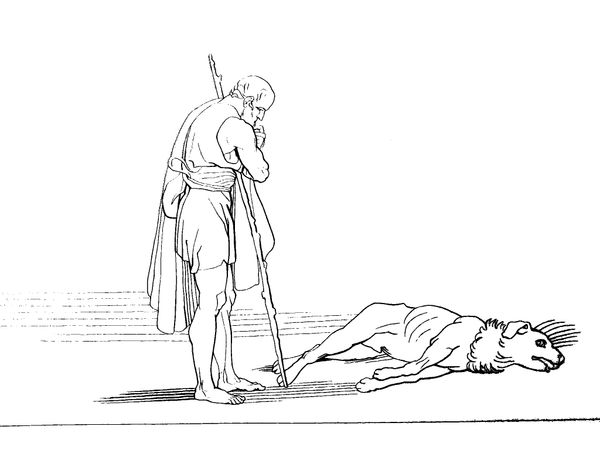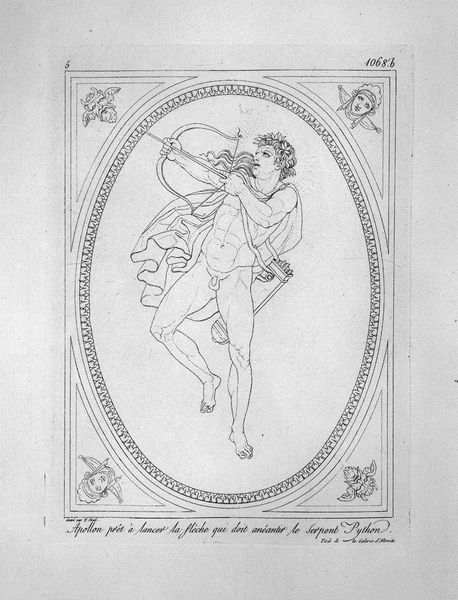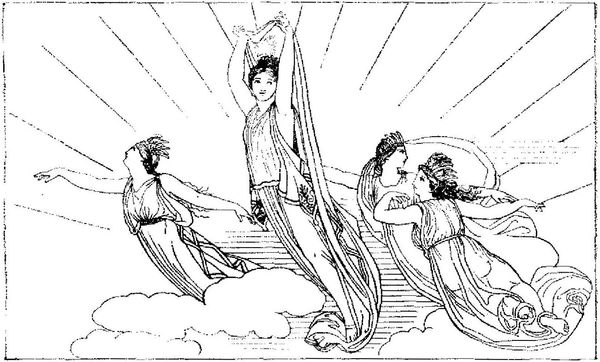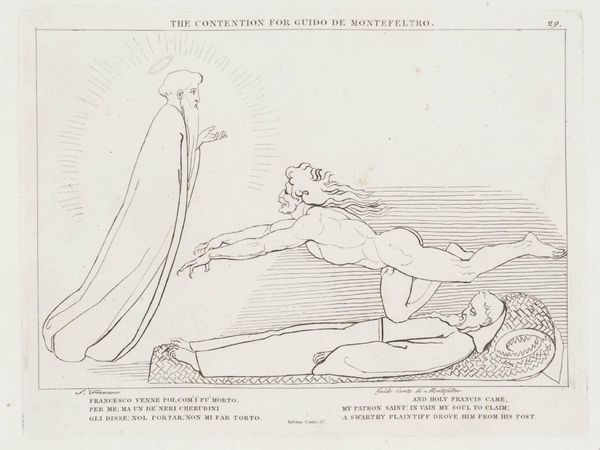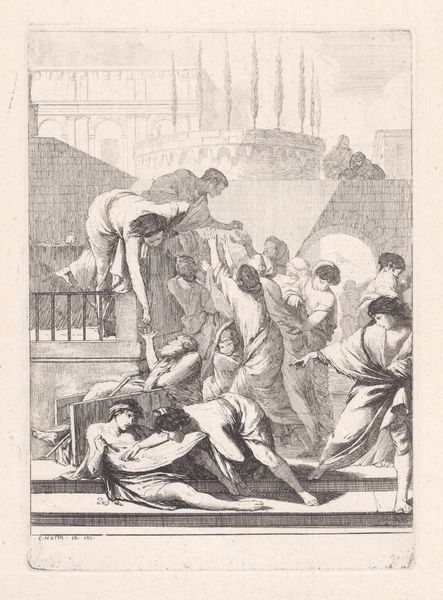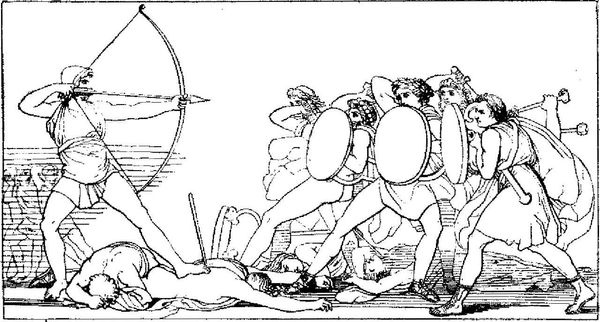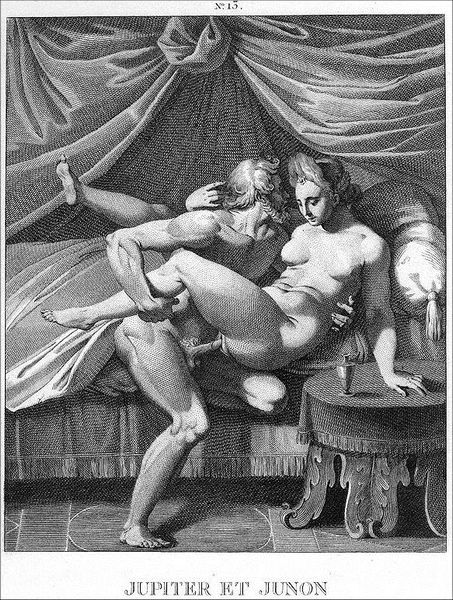
drawing, paper, ink
#
drawing
#
narrative illustration
#
narrative-art
#
head
#
figuration
#
paper
#
ink
#
human
#
history-painting
#
arm
Copyright: Public domain
Curator: John Flaxman's "Illustration to Odyssey," created in 1793, presents a scene of stark violence from Homer's epic. Editor: The stark simplicity immediately strikes me. The lack of color really focuses your attention on the dynamism of the composition and those dramatically contorted figures. Curator: Absolutely. Flaxman’s neoclassical style emphasizes line and form, aiming for a universal language accessible to all, which reflects the Enlightenment's belief in reason and clarity. Prints such as this gained immense popularity through wide distribution, fostering an increased appreciation for classical literature among a broad audience. Editor: What is remarkable is how Flaxman distills such a brutal moment to its essential elements. Look at the central figure's musculature. It is pure, raw power. It is fascinating how the almost diagrammatic treatment of light and shadow defines the forms. It calls upon and amplifies the overall emotional impact. Curator: Precisely, he translates the ancient poem into a visual language that aligns with the political and social currents of his time. By stripping away excess detail, he underscores the themes of human suffering and the abuse of power that resonated with the revolutionary sentiments of the late 18th century. Editor: Do you think the figures lack any psychological depth by design? Curator: Their expressiveness lies in the starkness of their posture and the situation more than subtle details of character. Consider this in relation to the Neoclassical rejection of the Rococo and Baroque emotionalism. Here, we're dealing with ideals, broad themes of struggle and human drama intended for instruction as much as they are for mere entertainment. Editor: I concede to your argument that the simplicity is strategically employed to provoke thought rather than emotion. By minimizing the visual noise, Flaxman allows the viewer to directly engage with the core themes. Curator: In conclusion, this illustration represents much more than just a scene from The Odyssey. It encapsulates the artistic, intellectual, and political ideals of a transformative period. Editor: I now appreciate how this emphasis on form transcends its immediate depiction. The universal character gives this print lasting artistic merit.
Comments
No comments
Be the first to comment and join the conversation on the ultimate creative platform.


